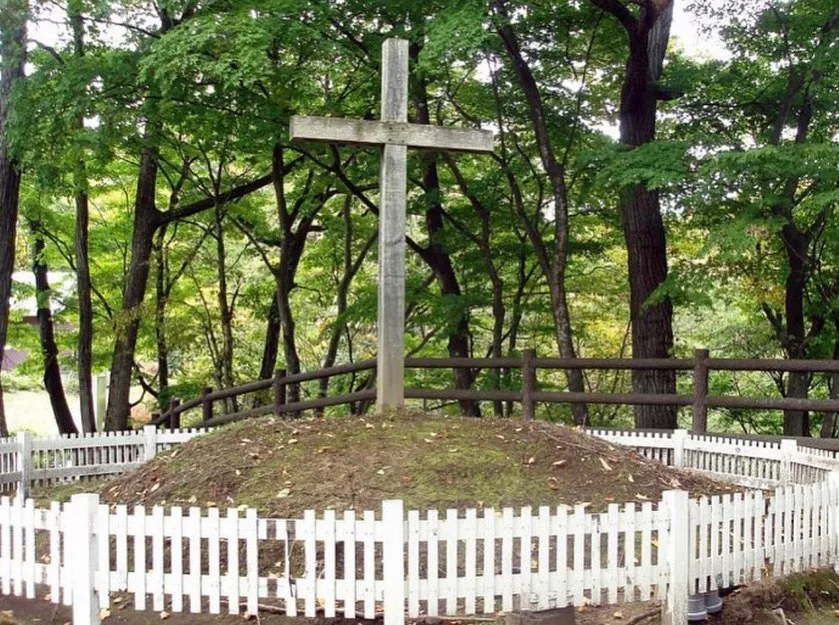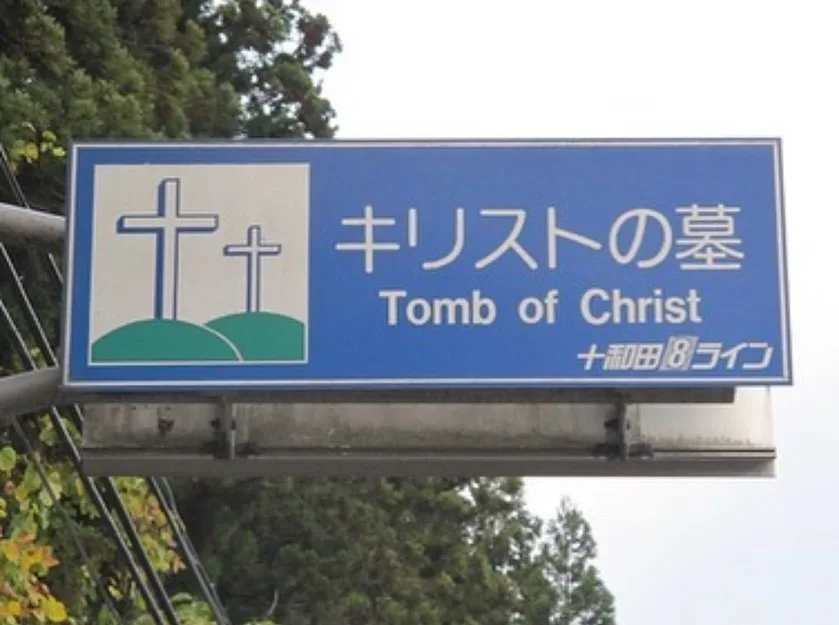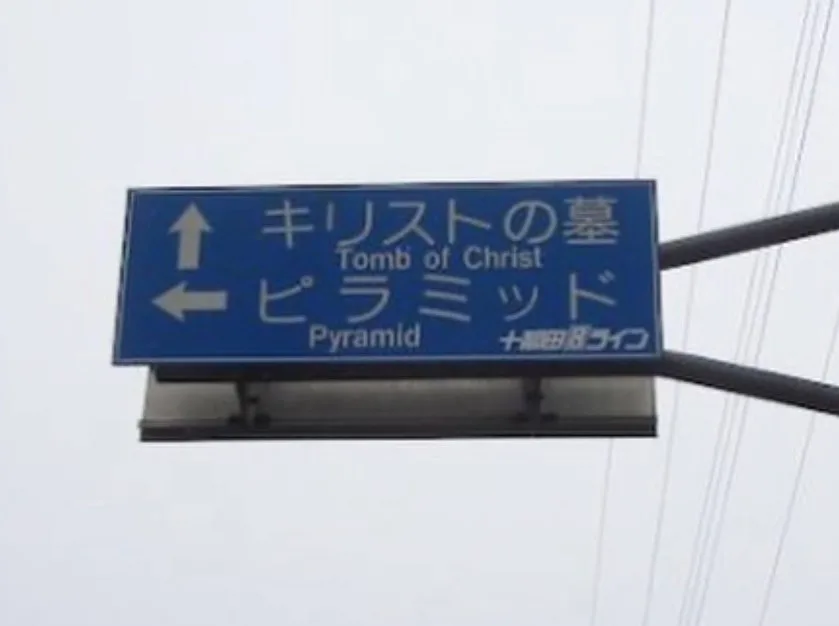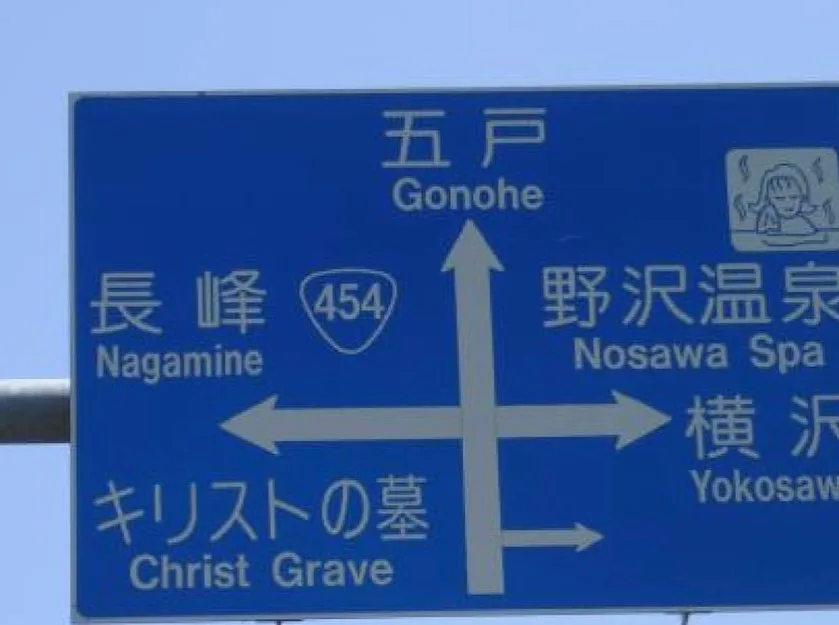The Legend of Christ’s Tomb in Japan
Deep in the heart of Aomori Prefecture, Japan, lies a captivating legend that challenges conventional narratives of one of history’s most significant figures—Jesus Christ. According to local lore, Jesus did not die on the cross in Jerusalem but instead escaped to Japan, where he lived a long life as a rice farmer.
This extraordinary tale has become an integral part of the cultural fabric of Shingo village, drawing thousands of curious visitors each year.
The Origins of the Legend
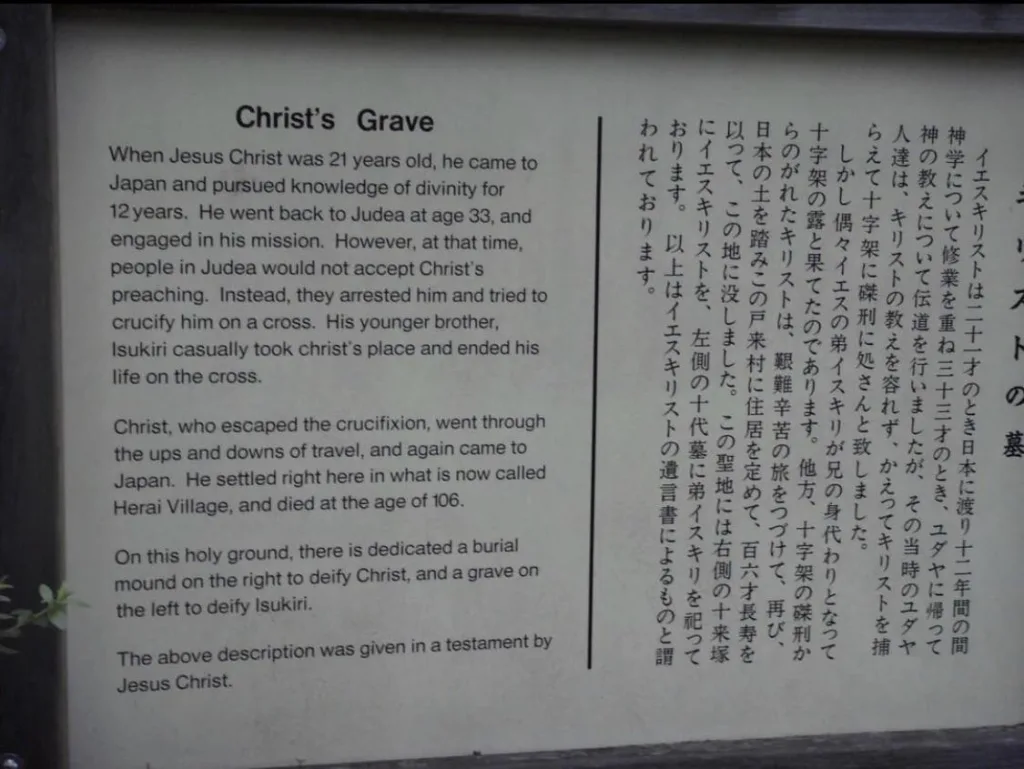
The story begins with Jesus’ so-called “lost years,” a period that is largely undocumented in the Bible. At the age of 21, it is said that Jesus traveled to Japan in search of spiritual enlightenment, immersing himself in Buddhist teachings and local customs.
This journey is believed to have shaped his understanding of compassion and humanity, which later influenced his teachings upon returning to Judea.
The pivotal moment in this legend occurs when Jesus, at the age of 33, returns to his homeland to spread his message. However, facing persecution from Roman authorities, he finds himself condemned to crucifixion.
In a dramatic twist, his younger brother Isukiri takes his place on the cross, allowing Jesus to escape. As a keepsake from his family, Jesus takes with him a lock of hair from his mother, Mary, and one of Isukiri’s ears.
Journey to Japan
Following his escape, Jesus flees through Siberia and eventually arrives in Japan. He adopts the name Torai Tora Daitenku and settles in Shingo. Here, he marries a local woman named Miyuko and together they have three daughters. This domestic life is characterized by simplicity and hard work; Jesus is said to have farmed rice and lived quietly among the villagers.
As the years pass, Jesus becomes a beloved figure in Shingo. He reportedly lives until the age of 106, imparting wisdom and kindness to those around him. His life in Japan is marked by humility rather than miracles—he does not perform any grand acts but instead focuses on nurturing his family and community.
The Burial Mounds
Upon his death, local customs dictate that Jesus’ body be treated with respect. According to legend, after four years of exposure on a hilltop—a practice thought to honor the deceased—his bones are collected and interred in one of two burial mounds located near the village. The other mound is said to contain Isukiri’s ear and a lock of Mary’s hair.
These mounds are now topped with wooden crosses and are surrounded by serene woods that add an air of tranquility to the site. Visitors often describe a profound sense of peace while standing before these mounds, contemplating the extraordinary life that may have unfolded here.
Cultural Significance
The story has been perpetuated by various sources over the years, particularly through the Takenouchi Documents, which surfaced in the 1930s but were later deemed dubious due to their mysterious origins and subsequent disappearance during World War II. Despite this lack of concrete evidence, many villagers embrace the narrative as part of their identity.
The annual Kirisuto Matsuri (Christ Festival) held every June celebrates this unique heritage with traditional dances and rituals that draw connections between ancient Hebrew customs and local practices. The festival serves as a reminder that folklore can shape cultural identity in profound ways.
The Tomb of Christ in Shingo
While skeptics may dismiss this tale as mere legend or folklore, it undeniably adds an intriguing layer to the narrative surrounding Jesus Christ. The Tomb of Christ in Shingo stands as a testament to how stories can transcend geographical boundaries and cultural differences. Whether viewed as an elaborate myth or a genuine piece of history, it continues to inspire curiosity and wonder among those who visit this remarkable site.
